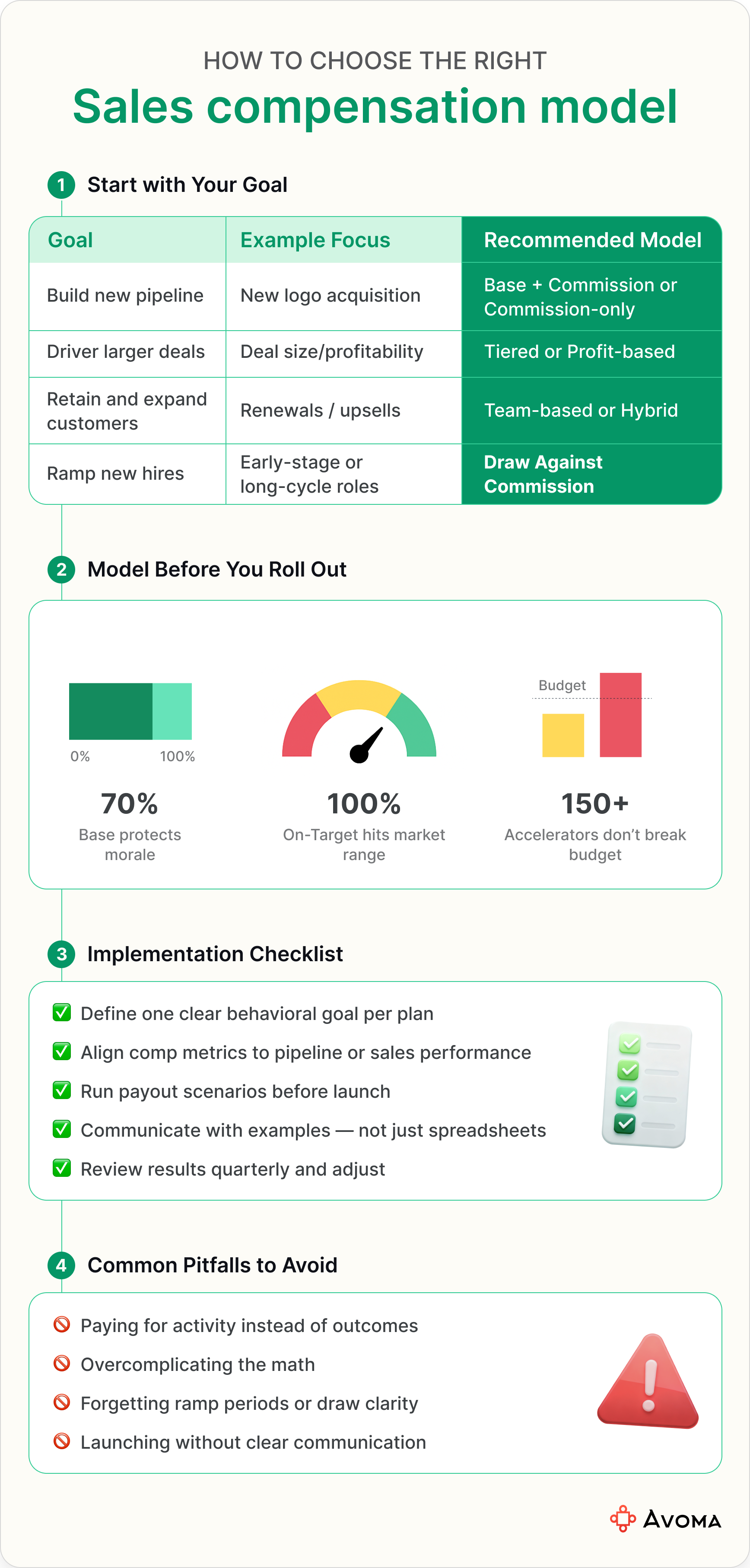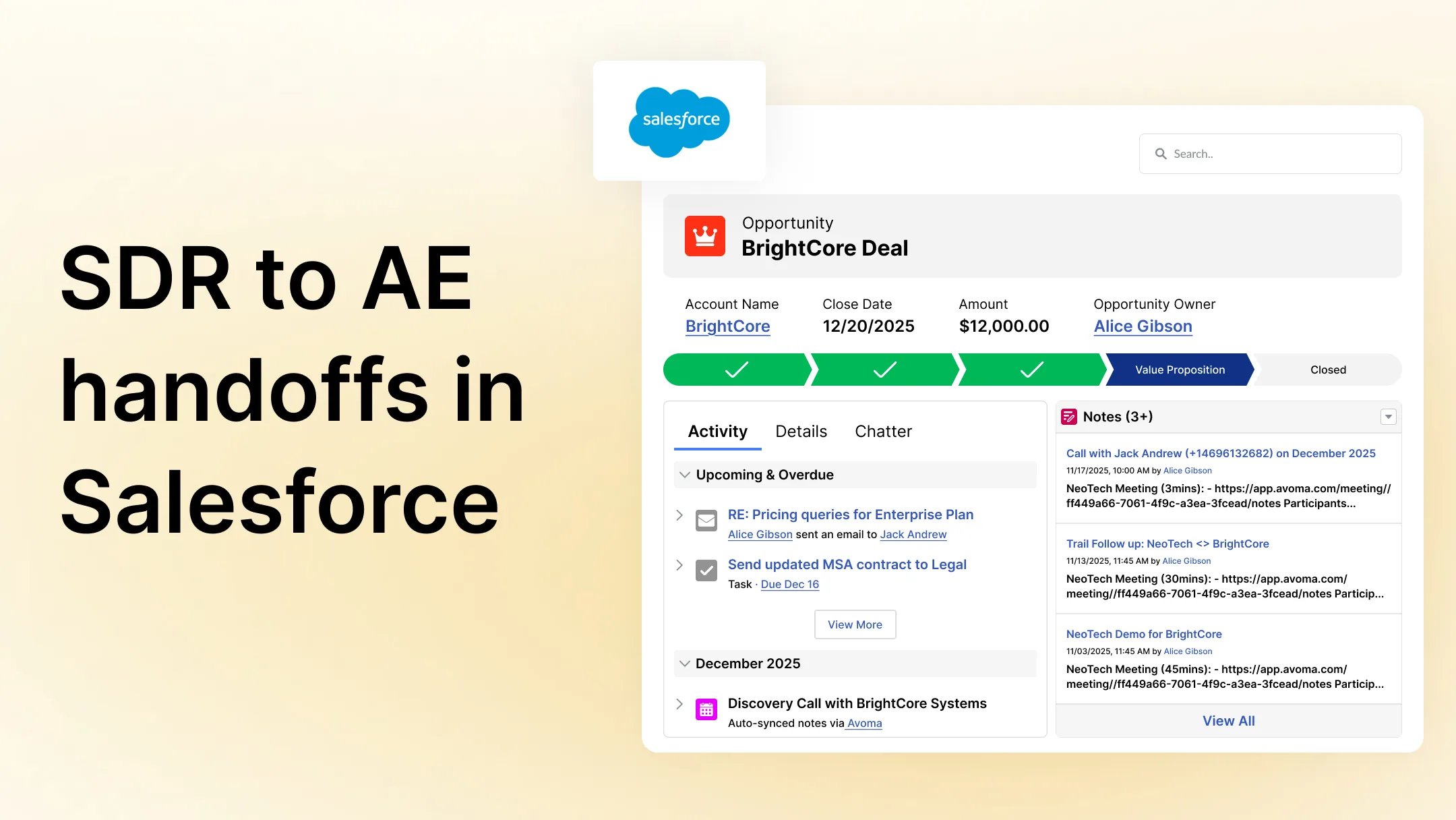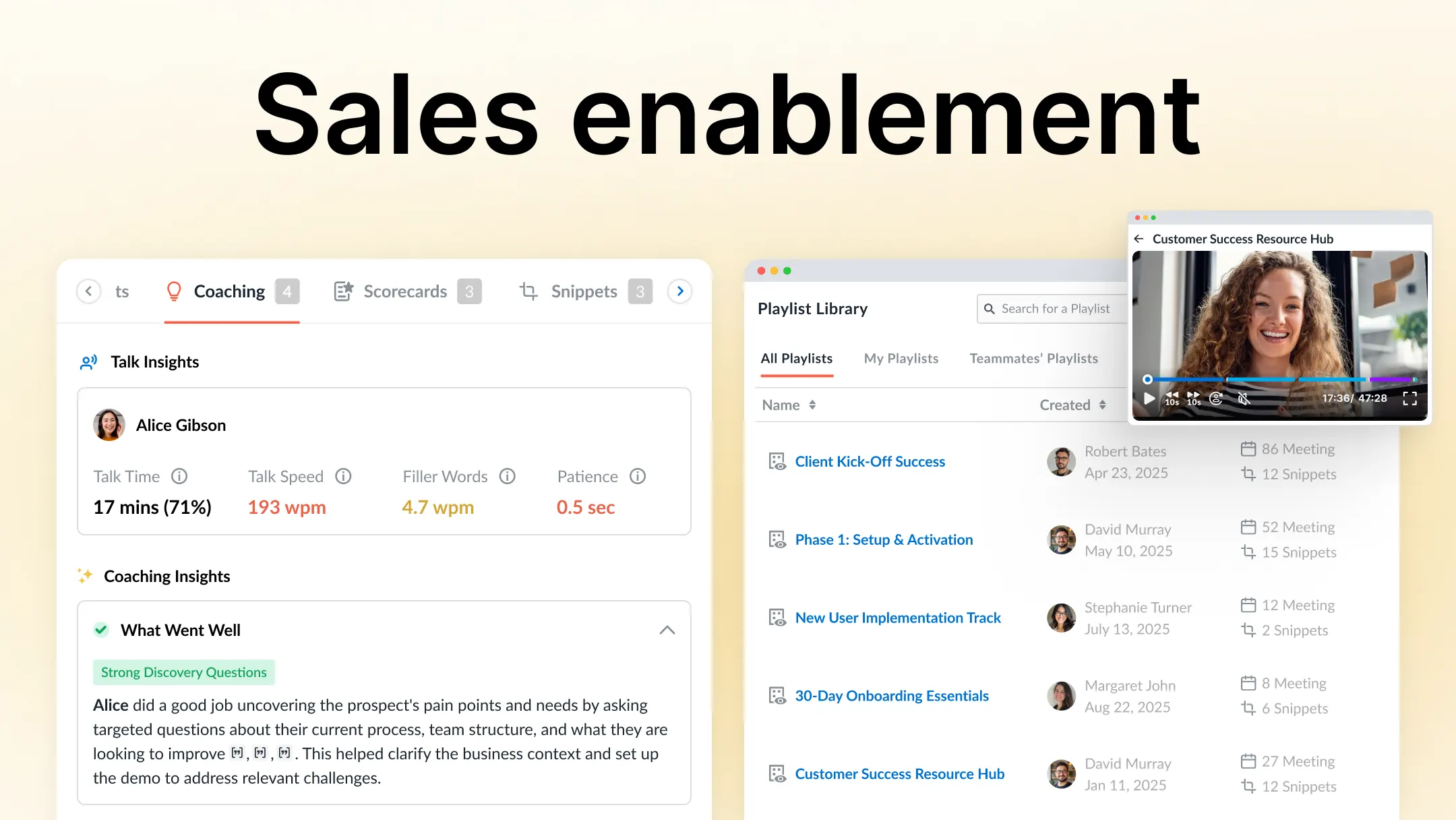How to choose the right sales compensation model for your team
Table of Contents:

Your sales compensation plan defines how your sales team sells. It shapes priorities, deal quality, and revenue consistency. When it’s misaligned, performance slips, and the best sales reps look elsewhere.
In SaaS, sales compensation is a leadership tool. The commission structure you choose decides which behaviors get rewarded and which fade out.
This guide explains the main sales compensation models, when to use each, and how to align your plan with your go-to-market sales strategy.
Why sales compensation models matter
Sales compensation is unlike any other pay structure. It directly links performance to reward and that link shapes how your sales representatives sell.
A strong model builds clarity and trust. Reps know exactly how to win, and sales leaders can see how individual effort drives revenue.
A poor model does the opposite. It blurs priorities, encourages short-term thinking, and turns sales quotas into a moving target.
In B2B environments, especially those with recurring revenue, compensation is also a reflection of sales strategy. Early sales teams reward hustle and new business. Mature teams shift focus toward retention, expansion, and deal quality.
Before choosing a model, understand what each one is built to encourage. Because in sales, pay drives behavior, and behavior drives results.
The main types of sales compensation models
Every sales team designs its commission plan a little differently, but most start from one of a few core models. Each structure sends a different signal about what matters most like volume, profitability, collaboration, or consistency.
1. Base Salary + Commission
The most common model in B2B sales. Reps earn a fixed base for stability and a commission rate for performance. It creates a clear link between effort and reward without exposing reps to too much income volatility.
Teams often use this when they’ve reached steady revenue predictability and have defined sales targets. It helps attract experienced sellers who expect both security and upside.
Watch for: keeping the commission rate too flat. Top performers may plateau if extra effort doesn’t lead to meaningful gains.
2. Commission-Only
This structure pays reps purely on results, no base salary. It’s direct and simple: sell more, earn more.
It works best for transactional environments or early-stage companies that need to control fixed costs. Because pay depends entirely on output, it tends to attract aggressive, self-driven sales professionals.
The tradeoff is stability. Income swings can be sharp, and turnover often follows. That instability can also make forecasting difficult for finance and hiring teams.
3. Tiered Commission
Tiered plans reward overperformance by increasing commission rates once certain thresholds are hit. For example: 8% up to quota, 12% beyond.
This model builds momentum and encourages reps to push past 100% attainment. It’s popular in growth-stage companies where leadership wants to scale revenue quickly without raising base pay.
The downside is predictability. Tiered payouts can make forecasting costs harder, especially if several sales representatives overperform at once.
4. Profit-Based or Margin-Based
Here, sales commissions are tied to profit margins instead of gross deal value. The goal is to reward smart pricing and discourage heavy discounting.
This model fits companies selling customizable or high-ticket solutions where profitability matters as much as volume. It aligns sales reps with company health rather than top-line revenue alone.
However, it’s harder to implement. Reps need transparency into how margins are calculated, or it risks feeling arbitrary.
5. Draw Against Commission
A draw gives reps a guaranteed income upfront, which is later offset by earned sales commissions. It’s especially useful for new hires or roles with long ramp times and delayed sales cycles.
There are two types:
- Recoverable draws act as an advance that must be repaid through future commissions.
- Non-recoverable draws are more like a safety net, written off if the rep doesn’t cover the amount.
Draws help with retention during early months but require tight tracking and clear communication.
6. Team-Based or Split Compensation
In this model, sales incentives are shared among several contributors — Sales Development Representatives (SDRs), Account Executives (AEs), and account managers, for instance. It reflects the reality of complex B2B sales processes, where no one wins alone.
It works best in account-based or enterprise sales motions, encouraging collaboration across the funnel. But it can blur accountability if ownership isn’t clearly defined. Leaders often pair it with shared performance metrics like team quota attainment or customer retention.
In practice, most companies mix and match. A standard Base + Commission plan might include tiered accelerators, profit thresholds, or shared sales bonuses. The best plan matches your revenue motion, customer buying journeys, and company stage.
Key components that make up any model
Every sales compensation plan is built from a few common parts. Understanding what each one does and how they interact helps you design a plan that’s motivating, fair, and easy to manage.
Base Pay
The fixed portion of a seller’s income. It provides stability and helps retain experienced sales reps who expect predictable earnings.
The right base-to-variable mix depends on your sales cycle. Enterprise roles with long cycles usually carry a higher base. Transactional roles lean heavily on variable pay to drive urgency.
Commission Rate
Commission rate is the variable portion tied to performance. It should be simple enough for reps to calculate on their own, ideally, without a spreadsheet.
Good plans tie commission to measurable outcomes like bookings, ARR, or profit margin. Avoid over-engineering. When reps can’t explain how they’re paid, motivation fades fast.
On-Target Earnings (OTE)
On-Target Earnings (OTE) represent what a rep earns when they hit 100% of quota. It’s the number most sellers care about first, and the benchmark recruiters use to compare offers.
Review OTE annually. Market shifts, sales territories, and product mix can all impact what competitive looks like.
Quota
The target that determines how commissions are paid. A realistic quota builds trust; an inflated one burns out the team.
Quota coverage is the total company quota divided by the number of sales reps to see if targets are achievable across the group.
Bonuses and SPIFs
Sales bonuses reward specific outcomes, like closing multi-year contracts or landing a strategic logo. SPIFs (Sales Performance Incentive Funds) are short-term contests or rewards designed to boost activity around a particular goal, for example, booking demos in a slow month or pushing a new product line.
They’re useful for short bursts of focus but should complement, not replace, a solid core plan. Overusing them signals that the base plan might not be working.
Non-Cash Incentives
Trips, awards, and non-monetary incentives matter more than they sound. They reinforce culture and motivate both top performers and emerging talent.
Recognition programs that balance individual and team wins help avoid unhealthy competition.
When you line up these components, the goal is alignment, ensuring every element of your sales commission structure points sellers toward the same outcomes your company values most.
How to choose the right sales compensation model
Selecting a sales compensation plan isn’t a one-time design exercise. It’s an operational decision that has to match how your sales force sells, what you measure, and how predictable your revenue is. Here’s how to turn that into a clear decision.
1. Define your primary goal
Ask one question first: What behavior do we need more of right now?
- Pipeline growth: Use models that reward activity and new business (like Base + Commission or Commission-only).
- Deal quality and profitability: Consider Margin-based or Profit-based models.
- Retention and expansion: Layer performance-based bonuses or team-based incentives for renewals and upsells.
Start from behavior, not from math. The comp model is the nudge. It should make the right behavior the easiest choice for the sales rep.
2. Map your revenue motion
Match the model to your sales motion:
3. Model payouts before rollout
Before announcing a plan, run three “shadow scenarios”:
- A low performer at 70% of target performance
- An average performer at 100%
- A top performer at 150%+
Check if payouts feel fair and sustainable. If finance winces at the top end, or reps would leave at the low end, tweak the mix before launch.
4. Communicate, then test
The best plan on paper can fail in rollout. Walk your team through examples of how they’ll earn. Show what good performance looks like in dollar terms.
Then review results after one quarter. See if the plan drove the intended behavior, not just results. If not, adjust early.
Implementation matters more than design. A simple, well-communicated plan that aligns with your sales goals will outperform a clever one that no one understands.
Visual guide: Choosing your sales compensation model
Here's a visual framework on choosing your sales compensation model. It helps turn sales strategy into action, so your team can see how each model aligns with different goals and sales motions at a glance.

Final thoughts
Your sales compensation plan is one of the strongest levers you have for shaping how your sales team sells.
The structure you choose should make it obvious what great performance looks like. It should reward focus, consistency, and judgment.
Plans that last are simple, explainable, and reviewed often. Markets shift, motions evolve, and comp has to keep pace.
The best model is the one your sales representatives trust and your business can sustain quarter after quarter.
Frequently Asked Questions
A sales compensation model defines how sellers are paid for performance. It outlines the mix of base salary, sales commissions, and sales bonuses, and links pay to measurable outcomes such as revenue, profit margin, or renewals. A clear model helps align individual motivation with company sales goals.
In B2B sales, compensation isn’t just about pay; it drives behavior. The model determines whether reps chase short-term wins or build long-term value. A well-designed plan reinforces how sales leaders expect the team to sell and helps retain top performers.
Start with your business goals and sales process. If you sell high-volume deals, a commission-heavy plan works. If your deals are complex and multi-touch, use a team-based or profit-driven model. Model payouts for low, average, and top performers before launch to confirm fairness and sustainability.
The best plans are simple, transparent, and aligned with measurable performance standards. Reps should understand their earning potential without a spreadsheet. Effective plans are reviewed quarterly and adjusted when company strategy or market conditions change.
SPIF stands for Sales Performance Incentive Fund. It’s a short-term reward for achieving a specific goal, like closing deals before quarter-end or selling a new product line. SPIFs should be used selectively to boost focus.
Most organizations review their plans annually, but high-growth sales teams should check quarterly. If your revenue motion, sales territory structure, or product mix changes, your plan should too. Regular reviews prevent misalignment and frustration among sales reps.
Common pitfalls include overcomplicating the plan, paying for activity instead of outcomes, ignoring ramp periods, and failing to communicate changes clearly. A confusing plan is the fastest way to lose trust and top talent.






What's stopping you from turning every conversation into actionable insights?








